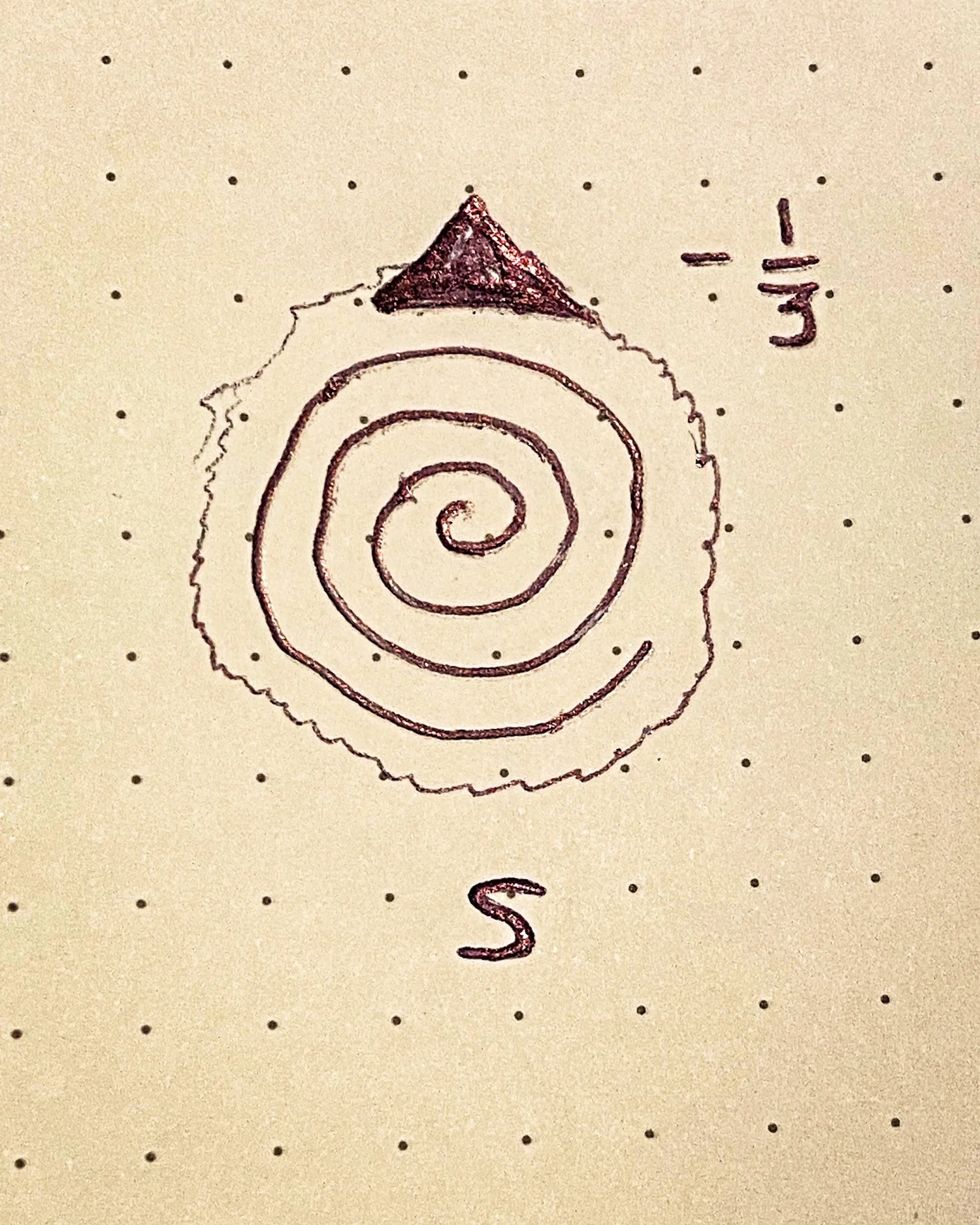
The Strange Quark
Quarks make up baryons like the proton and the neutron. Or more exotic things like the Λ0 or the Δ++. Previously, we’ve learned about the up and down quarks - those fundamental constituents of matter like protons and neutrons. Today we’re learning about the third of the three light quarks - the strange quark!The stability of quarks against decay is a quirky thing to talk about because the context matters a lot. One of the down quarks in the neutron will decay - in about fifteen minutes or so - to an up quark, shooting out an electron and leaving behind a proton. But that’s only if the neutron is alone. If its bound together with a proton in an atomic nucleus, it is stable.
The strange quark will also decay - also typically to an up quark - and it’s lifetime also depends on the context. The Lambda baryon - like the proton - is a big bag of nuclear goo with three quarks banging around inside. It has an up, a down and a strange quark.
The thing about strange quarks is: particles that contain one tend to live longer than you’d expect.
The reason for this? There are a few. First, it necessarily decays via the weak force, which is always slower to move. But it’s worse than that. There’s just not much for a strange quark to decay into. Heavier particles can only decay into lighter particles, and the strange quark is just not heavy enough to provide many good options. There is literally one option: the up quark. To decay into an up quark, strange quark must emit a W-boson. It must behave like a down quark. The window for that decay is small! It might be 13 percent the size of a down quark. But between us, it’s kind of surprising that this happens at all! That 13 percent suppression is related to something astonishing called the Cabibbo angle, which we’ll come to at the end of the season.
In any case, getting the right window to decay to an up quark takes awhile, which is why strange particles tend to live so long.
Just like it’s awkward to talk about the lifetime of a strange quark, it’s also awkward to talk about it’s electric charge. Quarks always show up in groups - and its their collective, electric charge that matters - but for the bean counters out there, the strange quark has an electric charge of minus 1/3. Just like the down quark.
In a lot of ways, the strange quark is just a heavy version of the down quark.
How heavy? Fairly. Compared to the humble 4.7 MeV of the down quark, the strange quark’s mass is around 95 MeV.
It’s possible - in some corners of our universe - that strange quarks could be stable. But this is probably only true at stupidly high pressure. For example, It’s possible that they exist inside neutron stars.
Neutron Stars are what’s left over after a star goes supernova. A fragment. A tight ball of matter that fell in on itself. Without the constant outward pressure given by a star’s normal nuclear furnace, what’s left of star falls inward, pulled together by gravity.
Neutron star matter so tightly bound it’s basically like one titanic nucleus. These are stars that are just on the precipice of becoming black holes.
In this context. It is possible that the strange quarks can exist stably. For the experts, the Pauli Exclusion principle creates an effective, statistical pressure - modeled say by the Lennard-Jones potential - on the up and down quarks in the neutron star that can be relieved - in part - by the inclusion of strange quarks to literally mix things up.
At least, that’s what the models say. Whether we’d ever be able to test those models directly, is another matter.